Archived Commercial Blog Posts
Spring Cleaning for Your Business: The SERVPRO® Way | SERVPRO of Mid-City San Diego
3/24/2025 (Permalink)
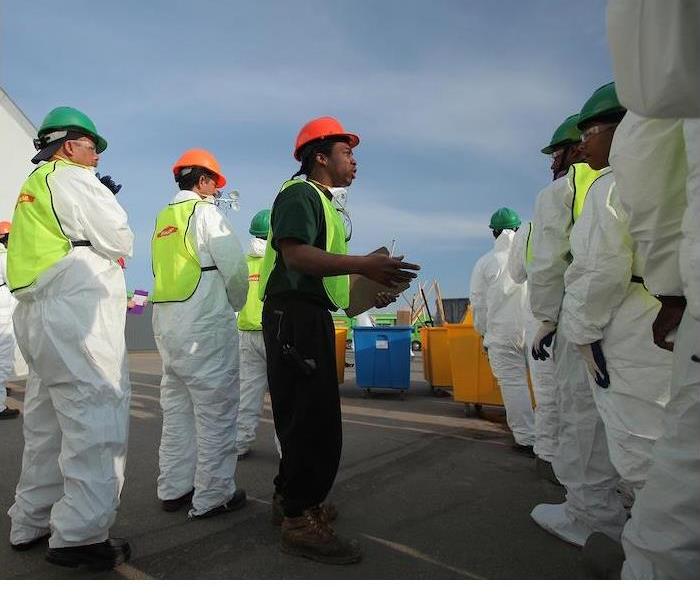 Don’t wait—contact us today to schedule your spring cleaning. Learn more about our services and get a free quote here!
Don’t wait—contact us today to schedule your spring cleaning. Learn more about our services and get a free quote here!
Why Spring Cleaning Matters for Business OwnersAs the flowers bloom and the sun shines brighter in San Diego, spring is the perfect time to refresh and rejuvenate your business space. The season brings a natural sense of renewal, and it’s an ideal opportunity for business owners to tackle the cleaning and maintenance tasks that get put on the back burner during the busy months. At SERVPRO of Mid-City San Diego, we understand the importance of a clean, welcoming environment—not just for the aesthetic, but for your employees’ health and your customers’ experience.
The Impact of Spring Weather on Your BusinessSpring in San Diego is synonymous with mild, pleasant weather. Temperatures typically range from the mid-60s to mid-70s, making it a great time for outdoor activities and events. This shift in weather can influence consumer behavior, with more people venturing out for shopping, dining, and entertainment. As your business gets busier, you might notice more foot traffic. That’s why now is the time to invest in spring cleaning services.
Spring also brings increased humidity, which can cause dust and debris to settle into corners and crevices. This is especially true in areas with high foot traffic or open windows. With SERVPRO of Mid-City San Diego’s expert cleaning services, you can ensure your space stays pristine, even as nature works its magic.
Spring Cleaning TrendsSpring cleaning is a time-honored tradition, but consumer trends in San Diego reflect a few key shifts. People are becoming more conscious of hygiene and cleanliness, especially in public spaces. This means businesses like yours must stay ahead of the curve by maintaining a high standard of cleanliness—not just for aesthetics, but to meet the rising expectations of customers who are more health-conscious than ever.
A clean, inviting space also enhances your brand’s reputation. It signals to your customers that you care about the details and their well-being, which helps build loyalty and trust. When the weather is perfect and your space looks spotless, you're setting the stage for more successful interactions and transactions.
Let SERVPRO of Mid-City San Diego Help You Tackle Spring CleaningIf you’re ready to give your business a spring refresh, SERVPRO of Mid-City San Diego is here to help. Our professional team specializes in deep cleaning and sanitization, making your commercial space look and feel like new. We’re ready to help you make the most of this season by handling the cleaning so you can focus on growing your business.
Don’t wait—contact us today to schedule your spring cleaning. Learn more about our services and get a free quote here!
Be Prepared: The Equipment and Safety Plan Your Business Needs to Avoid a Fire Disaster | SERVPRO of Mid-City San Diego
10/15/2024 (Permalink)
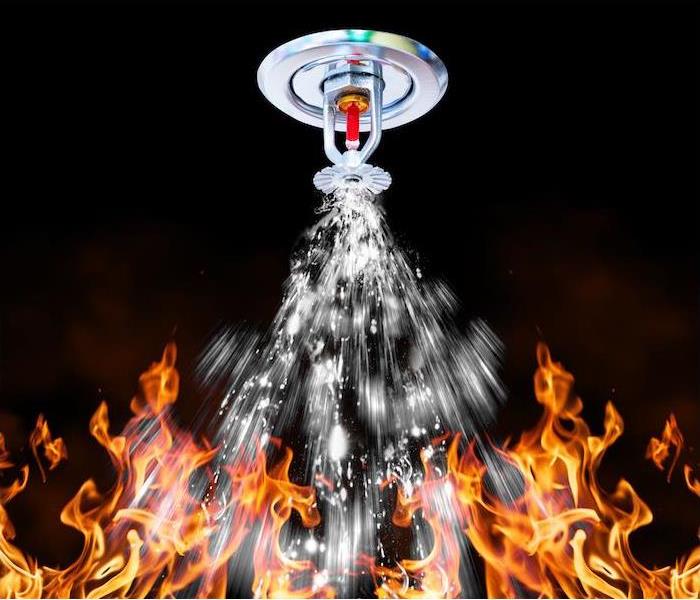 Protect your business with a safety plan! Contact SERVPRO® for expert guidance on fire prevention and ensure your employees and property stay safe.
Protect your business with a safety plan! Contact SERVPRO® for expert guidance on fire prevention and ensure your employees and property stay safe.
Fires can be devastating for businesses, and in San Diego, fire risks are present all year round. The dry summer and fall months in particular can see a rise in fire-related incidents. As a business owner, preparing for a potential fire disaster is critical to ensuring the safety of your employees and minimizing damage to your property.
Common Causes of Business FiresAccording to the National Fire Protection Association (NFPA), fires in businesses are most commonly caused by electrical faults, heating equipment, and cooking appliances. In San Diego’s Mid-City area, the warm climate during the summer and fall can heighten the risk of fires due to overworked air conditioning units and the dry conditions outside. These seasonal risks make it even more important to ensure your business is properly equipped to handle fire-related incidents.
Must-Have Fire Prevention Equipment for BusinessesHaving the right equipment in place is essential to reducing the risk of fire and protecting your business. Here’s a checklist of must-have fire prevention equipment:
Fire Extinguishers: These are the first line of defense in the event of a small fire. Ensure they are placed in easily accessible locations, and train employees on how to use them.
Smoke Detectors and Fire Alarms: Smoke detectors and alarms should be installed in key areas of your business, such as break rooms and office spaces. Regular testing and maintenance are crucial to keeping them in working order.
Sprinkler Systems: A reliable sprinkler system can help control and minimize fire damage, especially in larger commercial spaces. Ensure your system is tested and serviced annually to maintain functionality.
Fireproof Safes: Important documents, digital backups, and expensive equipment should be stored in fireproof safes to ensure their protection in case of fire.
Create a Fire Safety Plan for Your BusinessPreparation is key to minimizing the impact of a fire on your business. A clear, well-thought-out fire safety plan should include:
Evacuation Routes: Mark exits and ensure that all employees are familiar with evacuation routes. Conduct regular fire drills to keep everyone prepared.
Employee Training: Make sure your employees are trained on fire safety protocols, including how to use fire extinguishers and when to evacuate.
Emergency Contacts: Display emergency contact information in visible areas, including local fire departments and our SERVPRO of Mid-City San Diego office.
SERVPRO of Mid-City San Diego Can HelpWhen disaster strikes, having a professional restoration team ready can make all the difference. SERVPRO of Mid-City San Diego specializes in fire damage restoration and can help you get back on your feet quickly. Don’t wait until it’s too late. Contact us today to learn how we can help protect your business from fire disasters.
Visit SERVPRO of Mid-City San Diego for more information.
How do You Estimate a Fire Damage?
10/1/2022 (Permalink)
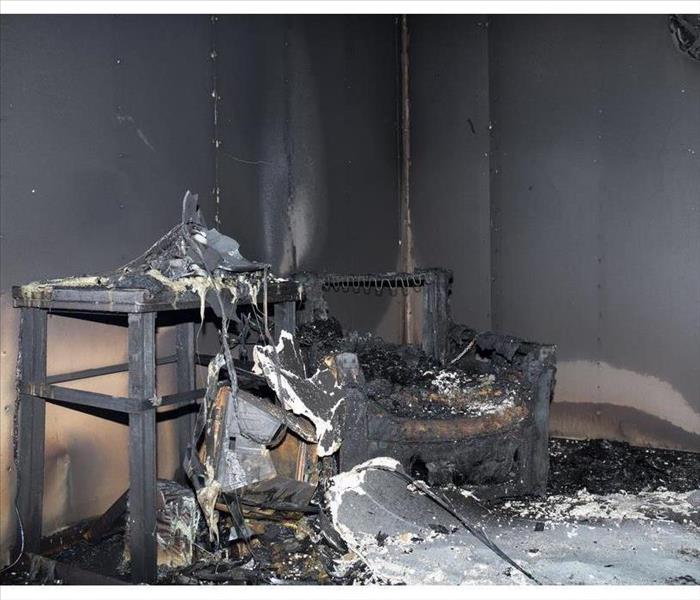 Fire damage to a home in San Diego, CA.
Fire damage to a home in San Diego, CA.
What You Should Know Before and After a Fire Loss
Fire damage is a devastating event that can have major consequences to your home and life. Fortunately, it's also usually something you can recover from. The more you know about fire damage, the more prepared you'll be during this time of need. Here's what you need to know:
What is fire damage?
Fire damage is caused by heat. This can be caused by electrical fires, gas leaks, explosions (like when a stove or furnace explodes), or cooking accidents (like when you spill hot grease on your carpet). It can also be caused intentionally with arson or cigarettes/cigars.
What can be done to prevent or minimize fire damage?
Preventing or minimizing damage is the best way to reduce cost, but it's not always possible. If you do find yourself in a situation where fire damage is imminent and cannot be avoided, there are some things that can be done to protect your property:
- Use a fire extinguisher if you're able to reach one safely.
- Close doors and windows to keep smoke out of rooms where people are trapped or sleeping.
- Stay out of harm's way until emergency responders arrive on scene or until all occupants have made their way outside the building safely.
- Call 911 immediately when smoke starts pouring into your home from an unknown source (or even from within). This will alert firefighters to get there as quickly as possible so they can begin working on containing and extinguishing the fire.
What will the fire inspector look for?
When a fire inspector arrives on-scene of your loss in San Diego, CA, he or she will ask what kind of fire it was. This is to determine whether the fire was accidental or intentional. After determining the type of fire, the inspector will begin an inspection to see if there is any damage that was caused by heat, smoke and/or water from firefighters' efforts to extinguish the blaze.
If there are no structural concerns after inspecting both interior and exterior areas of your property—meaning that everything looks safe enough for people be present on your property—then it's time for cleanup!
How long does it take to restore fire damage?
The time it takes to restore fire damage depends on the severity of the fire and whether there are any additional damages that need to be addressed. If your home was destroyed by a raging inferno, you may be looking at months before you can return home. However, if only some of your furniture and belongings have been damaged, then you could expect restoration work to be completed within a few days.
Fire damage is a serious matter. It can be dangerous for the property owner, as well as their neighbors and family members. In addition to being dangerous, it can also be very expensive. If you find yourself in need of repairs after a fire or other type of emergency, it’s important that you understand how this process works so that everything runs smoothly.
What To Do if a Commercial Toilet Will Not Stop Flushing
7/22/2022 (Permalink)
How to Stop a Commercial Toilet from Flushing
You enter a bathroom in your building and find a toilet that is flushing continuously. What do you do? There are several steps you can take to address toilet overflow. Potential solutions will depend on the type of flushometer your toilet uses: automatic or manual.
Follow these tips to diagnose the problem and find a solution.
1. For Automatic Flushometers, Perform a Simple Test
First, shut off the water by using a flathead screwdriver on the slot located somewhere on the flushometer. Depending on the model, you may need to take the cover off to find the slot.
Next, find the button that performs a manual flush and hold it down. If you hear two clicks, the diaphragm kit is malfunctioning and you need to replace it or clean it. You can find the diaphragm kit by removing the top of the flushometer.
If there is no issue with the diaphragm, you can check for a loose solenoid or contact a plumber.
2. For Manual Flushometers, Clean the Gasket
First, turn the water off with a screwdriver. Next, use a wrench to remove the top of the flushometer. Remove the gasket and clean it thoroughly, including the weep hole. If this does not fix the toilet, then you will need to replace the gasket.
3. Call a Professional if There is a Toilet Flood
A toilet overflow can cause serious damage to a commercial building if not dealt with properly. Walls and floors may deteriorate, and mold can start to grow within 48 hours. If your building in Oak Park, CA, suffers extensive water damage, be sure to contact a water restoration company that can help you remove all of the water and restore damaged property.
Following these tips will help you stop a toilet and address toilet overflow problems that stem from continuous flushing.
How To Begin the Drying Process Before the Professionals Arrive
6/19/2022 (Permalink)
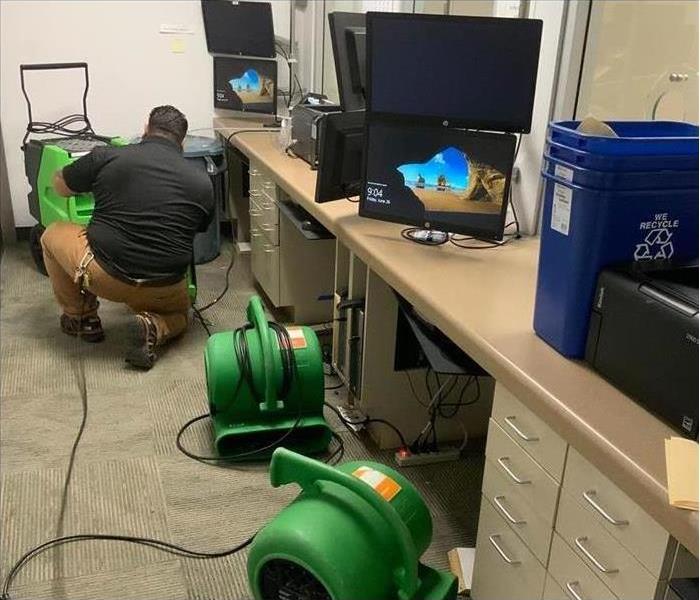 Drying office after water cleanup in Kensington, CA.
Drying office after water cleanup in Kensington, CA.
How To Begin the Drying Process Before the Professionals Arrive
When your Kensington, CA, commercial building floods from a broken pipe, time is of the essence. Water damage begins immediately and doesn't stop until you have eliminated all the moisture. You can follow several damage tips to get the process started while waiting for the professionals to arrive on the scene.
1. Practice Safety After a Pipe Burst
First and foremost, after discovering standing water, you must take precautions to ensure everyone's safety. Before implementing the cleaning tips, one essential step is to shut off the electricity to the affected area or the entire building. Otherwise, an electric current could be flowing through the water, putting anyone who contacts the water at risk.
Also, keep others, including children and pets, out of the area until it is completely restored. Limiting access will help avoid accidents.
2. Extract the Water
You must extract as much of the standing water as possible as soon as possible. People offering water damage tips often suggest using a wet/dry vacuum to remove water. If you don't have access to a wet/dry vac, you can use mops and towels.
3. Remove and Sort the Contents
Next, it's time to clear as many of the contents as possible from the affected area. This will enable you to clean more effectively and determine what is salvageable and what isn't.
4. Dry the Area and Contents
When you get the area cleared, begin the drying process. This is the most critical part of mitigating the water damage and preventing mold growth. Mold spores can start growing within 24 hours of water exposure. Disaster restoration professionals have the expertise and industrial equipment to ensure the space is dried thoroughly. You can use fresh air, fans, heaters and dehumidifiers.
Hopefully, you will never be faced with a water disaster at your business in Kensington, CA. However, knowing these damage tips beforehand can prove helpful if the worst occurs.
P.A.S.S.: The Only Fire Extinguisher Technique You'll Ever Need
5/18/2022 (Permalink)
Four Steps In Learning How To Use An Extinguisher
One of the most important tools for fire safety in a commercial property is the fire extinguisher. It is especially useful in commercial kitchens or in businesses working with a lot of flammable materials or substances. However, as important as this tool is, fire mitigation services in Rolando, CA, explain that too few people actually know how to use the tool effectively, reducing its usefulness. You can learn to use an extinguisher in four steps and with the acronym P.A.S.S.
1. Pull
To minimize fire damage, you want to use the extinguisher correctly. Before you can use the suppressant in the canister, you need to remove the pin from the handle or nozzle. To remove the pin, you only need to pull it all the way out. Removing the pin means the tool is active.
2. Aim at Kitchen Fire or Other Small Fire
Before squeezing the handle to release the flow of suppressant, you want to aim the nozzle at the fire. Do not aim the fire extinguisher high. You want to aim at the base of the flames to extinguish the fire at the cause.
3. Squeeze
To expel the suppressant, you need to squeeze the handle together. Squeezing allows the substance in the pressurized canister to evacuate the nozzle. Be sure to squeeze the handles completely. You want to release the suppressant with as much pressure as possible.
4. Sweep
As the suppressant leaves the nozzle, sweep the head back and forth across the flames. Remember to start from the base and move upwards.
A fire extinguisher is an essential piece of safety equipment and you will likely have multiple canisters on your property. As a business owner, you should ensure that all employees know how to use the tool effectively. Talk to your team about the P.A.S.S. technique, and perhaps provide a demonstration.
What to Expect from the Fire Cleanup Process
2/16/2022 (Permalink)
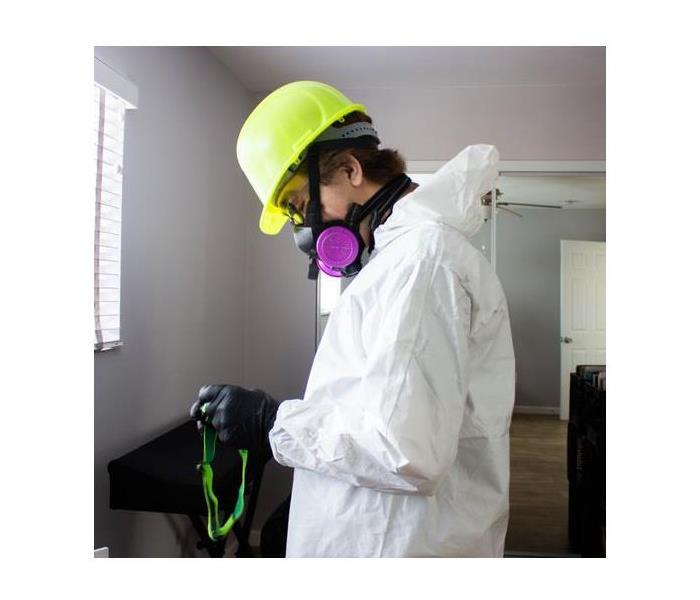 Our SERVPRO teams suit up to clean up any fire damage!
Our SERVPRO teams suit up to clean up any fire damage!
As if a commercial fire in San Diego, CA weren’t enough of a nightmare, the cleanup process can be difficult to deal with if you aren’t properly prepared or informed. Whether it’s dealing with insurance companies or keeping track of all the damaged or destroyed assets, it’s important to know the proper procedure in such an event. Here are a few tips to keep in mind to make sure you’re up to speed on what the fire cleanup process will entail:
1. Emergency Contact
Once you’re sure all your employees are safe and the fire is gone, your first point of contact should be a fire and smoke damage restoration professional. Such an organization will inspect the property for fire and soot damage, including what can be salvaged or what needs to be replaced.
2. Board-Up and Roof-Tarp Service
Depending on the severity and extent of the smoke damage, the restoration professional will begin the smoke cleaning process by boarding up missing windows and walls, as well as placing tarps on damaged roofs. This protects the property from the elements and increases security for the professionals to do their work.
3. Water Removal
Most commercial buildings are fitted with sprinklers in the event of a fire. This can do wonders in preventing severe fire damage but can also cause water damage. In such an event, restoration professionals will treat and dry the affected area.
4. Smoke and Soot Removal
Using specialized equipment and techniques, the restoration professionals will treat all surfaces, including walls and ceilings, for soot and smoke damage.
5. Cleaning and Sanitizing
All items that weren’t completely destroyed by the fire or smoke will then be cleaned. A high-quality restoration professional will use specialized techniques and equipment that will restore mildly damaged belongings to their pre-fire condition. This will also involve odor removal.
6. Restoration
The final step, restoration, involves minor or extensive repairs of drywall and other affected structural areas to return the building to its pre-fire condition.
Why Do Restoration Workers Board Up a Building After a Fire?
2/2/2022 (Permalink)
You may have walked by a burned-out building after a commercial fire in San Diego, CA, and wondered why all the windows were boarded up. It isn’t very aesthetically pleasing, but does it actually serve a purpose?
As it turns out, boarding up a recently burned property is a very important part of the fire damage restoration process. To understand the value of the board-up service, it’s helpful to get a clearer understanding of the fire restoration process as a whole. Here is a brief rundown of the fire damage restoration process as it relates to board up service:
Thorough Inspection
Before the boards and tarps go up, fire restoration professionals scan the affected area with state-of-the-art equipment that gives them accurate readings as to the levels of soot, smoke, and fire damage in the premises. This provides them with a solid grasp on which items and belongings are salvageable and which are too far gone. Many of the items, because they are salvageable, still have inherent value, and it’s important to protect them.
Boarding Up for Safety
Once the affected area has been assessed for the severity of damage and salvageability of items, restoration professionals will board up any destroyed windows and place tarps over destroyed ceilings. This serves multiple purposes.
Perhaps most important, this helps protect damaged items from further elemental damage, particularly from precipitation. Statistically speaking, looting is also a serious problem with burned-out commercial buildings as well. Looters may not have the equipment to tell them whether an item is salvageable or not, but it usually won’t stop them from stealing.
This also creates a secure environment for fire restoration professionals to work in, as the fire cleanup process is very involved and often difficult work. Once the area has been boarded for security and safety purposes, professionals will get to work on restoring items and structural areas to their pre-fire condition.
How To Operate a Fire Extinguisher Safely
1/24/2022 (Permalink)
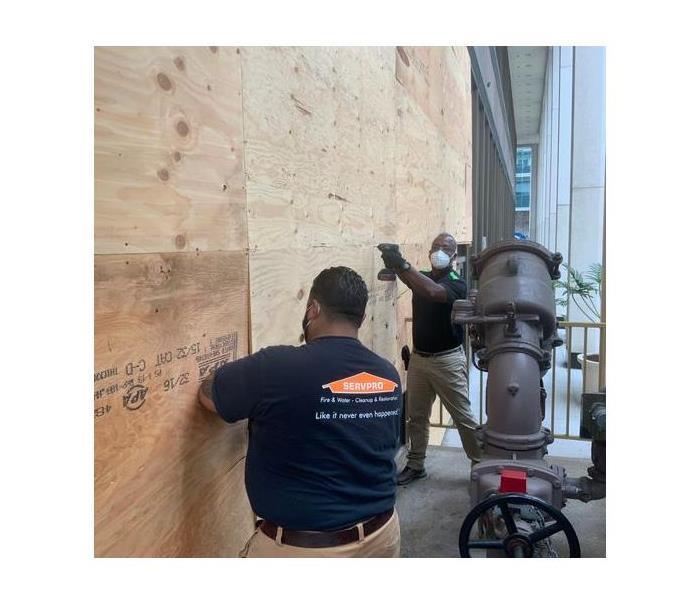 SERVPRO is here for you for every step of the fire restoration process, from boarding up broken windows to reconstruction!
SERVPRO is here for you for every step of the fire restoration process, from boarding up broken windows to reconstruction!
A commercial fire in San Diego, CA is one of the most tragic and frightening things that can happen. Most business owners have an insurance policy to restore their assets in the event of a fire, but what about preventing it from destroying the building in the first place? By law, commercial buildings are equipped with a fire extinguisher, but many people aren’t sure how to use them or, just as important, when not to use them. Here are a few tips for avoiding excessive fire damage and knowing when to leave it to the fire department.
- Call the fire department if appropriate. A small kitchen fire isn’t necessarily a reason to call the fire department, but if the blaze has consumed more than a small amount of space, it’s better to call before you address the fire yourself. It’s also wise to contact a fire restoration professional.
- Identify a safe escape path before approaching the fire. Don’t allow yourself to become trapped before you attempt to fight the fire. Even while using the fire extinguisher, keep an eye on your path so you can make your escape before fire or smoke fills it.
- Make sure you’ve chosen the right kind of fire extinguisher. Contrary to what many assume, there are many variations of fire extinguishers intended for different fires. For example, a fire in ordinary combustibles such as paper, cloth and plastics requires water extinguishers labeled A. Fire extinguishers labeled B and C, however, are intended for flammable liquids and electrical equipment, respectively.
- Use the P.A.S.S. technique. Proper utilization of a fire extinguisher follows four simple steps. “P” stands for “pull” and refers to the pin that will break the tamper seal. “A” stands for “aim.” Make sure the hose is pointed low, at the base of the fire. The first “S” stands for “squeeze,” referring to the handle, which releases the flame retardant. The second “S” stands for “sweep,” referring to the side-to-side sweeping motion that may most effectively fight the fire. Continue this motion until the fire appears to be out. If the fire reignites, repeat the steps.
 Don’t wait—contact us today to schedule your spring cleaning. Learn more about our services and get a free quote here!
Don’t wait—contact us today to schedule your spring cleaning. Learn more about our services and get a free quote here!





 24/7 Emergency Service
24/7 Emergency Service




